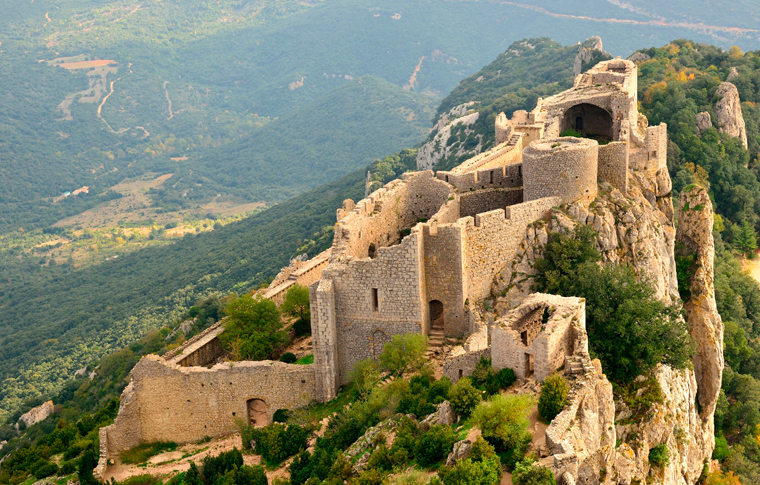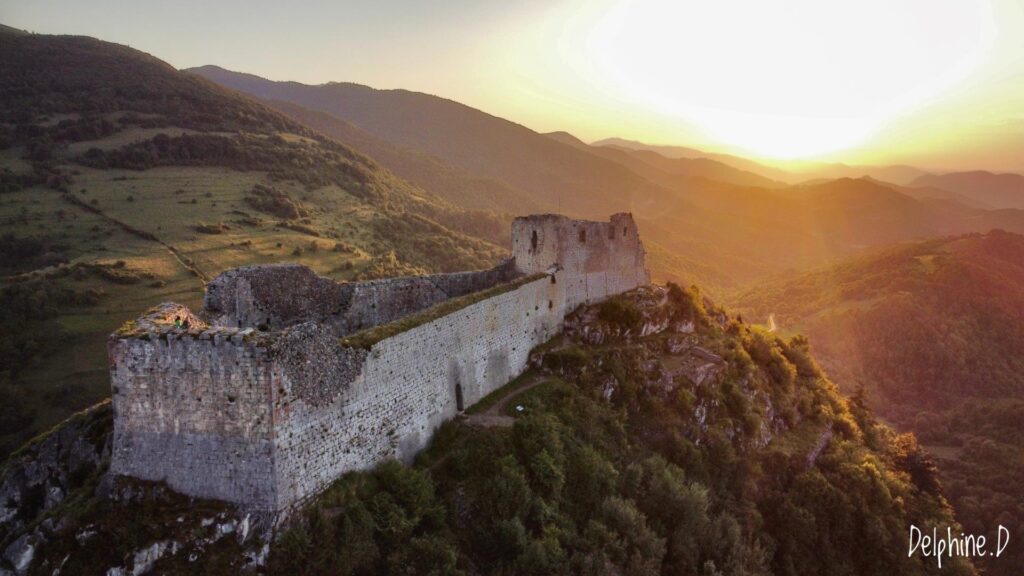
This French Royal Castle Holds the Most Terrifying Secrets Ever Uncovered: that’s the headline, and trust me—it’s spot on. We’re diving deep into a royal fortress that’s way more than turrets and tapestries. This castle’s soaked in blood, secrets, brutal betrayals—and even whispers of treasure. Ready to have your mind blown? Let’s roll. From mass executions to prisoners like the Marquis de Sade, this fortress has more stories than a Netflix True Crime binge. By the end, you’ll get the full scoop—from terrifying facts to pro travel tips, and spicy historical insights. Let’s unpack the past, ya’ll.
This French Royal Castle Holds the Most Terrifying Secrets Ever Uncovered
These French royal castles aren’t just Instagrammable ruins. They are monuments of faith, terror, and resistance. From the mass execution of Cathars to religious purges and prison escapes, they’ve witnessed some of the darkest moments in European history. Step through their gates, and you’re not just sightseeing—you’re stepping into the past. And it has a lot to say.
| Site | Key Event & Date | Details |
|---|---|---|
| Château de Montségur | March 1244 | ~220 Cathars burned after 9-month siege by 10K troops |
| Fortress of Miolans | 1564–1792 | Prison for ~200, cell-blocks named Hell, Purgatory…; de Sade escaped 1772 |
| Château d’Amboise | March 1560 | ~1200 Huguenots hanged from balconies; court fled |
| Holy Grail Legend | Post‑1244 | Rumored theft of Grail during Montségur’s fall |
Context: Which Castle Are We Talking About?
The spotlight is on Château de Montségur, perched in southwest France. This isn’t just any castle—it’s where around 220 Cathars died in 1244 after refusing to renounce their faith during a brutal nine-month siege—fought against roughly 10,000 royal troops versus ~300 defenders.
Then there’s Fortress of Miolans, a notorious prison in Savoy: home to about 200 inmates, with eerie cell names like Hell, Purgatory, and Paradise—and home to notorious fugitives like the Marquis de Sade, who made a bold escape in 1772.
And don’t sleep on Château d’Amboise, in the Loire Valley: site of the brutal Amboise Conspiracy in 1560 where about 1,200 Protestants were hanged, desiccated, and even displayed on castle walls—so gruesome the smell sent the royal court packing.
These aren’t just castles—they’re history’s back alleys.

The Montségur Massacre – A Dark Medieval Tale
The Fortress on the Pog
Built atop a treacherous cliff, Montségur’s location made it a perfect Cathar refuge—fortified, isolated, nearly unreachable.
Siege & Resistance
In 1242, the murder of inquisition reps pushed the church to strike—by 1243, royal forces led by Hugues de Arcis had besieged about 300 Cathars and refugees.
Fire & Faith
By March 16, 1244, the walls fell—220 Cathars were immolated for refusing to forsake their beliefs. Those who recanted walked free; the rest went to the flames.
Grail Lore & Mysteries
The Holy Grail Connection
Legends say the Cathars hid off with a treasure—maybe the Grail—building intrigue that outlasts centuries. It’s one of Europe’s most persistent mysteries.
Archaeology & Solstice Sync
Current digs expose charred chapel stone and an eerie solstice moment: two windows align each June—flooding a former inner sanctum with light. Pilgrims and scholars still visit every summer solstice.
Prison of Hell, Purgatory & Paradise
The Fortress of Miolans
This old castle near Savoie turned prison around 1564 until 1792. Dungeons had chilling names—matching zones in Dante’s Divine Comedy—and inmates ranged from political rebels to sexual deviants.
Marquis de Sade’s Great Escape
Locked up in 1772, the infamous Marquis cooked up a daring escape with two friends—slipping through unbarred windows using twisted bedsheets, a distraction candle, and even leaving behind a polite note.

The Bloody Amboise Reign
Huguenot Uprising & Guillotine Town
In 1560, a failed plot to snatch King Francis II led to the mass execution of over 1,200 Protestants, who were hung from balconies and battlements. The scene was so graphic the royal family evacuated.
Aftermath & Attempts at Peace
By 1563, the Edict of Amboise was signed—offering temporary tolerance for Protestant worship. But peace was short-lived, and tensions continued to brew into the French Wars of Religion.
Travel Guide – Explore the Shadows
Getting There
- Montségur: Located in Ariège (Occitanie region), accessible by car or bus from Toulouse.
- Miolans: Near St‑Pierre Albigny in Savoie, accessible from Annecy or Albertville.
- Amboise: In the Loire Valley—quick ride from Tours or Orléans.
What to Pack
- Durable hiking shoes (especially Montségur’s rocky terrain)
- Water, snacks, and sunscreen
- A camera and an audio guide or history app
Safety & Rules
- Stick to marked paths—these are fragile ruins.
- Drone use is banned without special permits.
- Respect signage and avoid disturbing archaeological zones.
Hidden Histories and Cultural Impact
The influence of these castles reaches beyond stone walls. Montségur, for instance, became a symbol of resistance for modern-day Occitan identity and has been referenced in novels, documentaries, and even video games. It’s now a spiritual site for neo-Catharists and mystics.
Château d’Amboise, while famous for being Leonardo da Vinci’s final resting place, holds deeper national trauma. It was a key site where religious identity met royal fear, leading to executions that shocked even 16th-century Europe.
Preservation and Modern Tourism
Thanks to the French Ministry of Culture, Montségur has been listed as a Historic Monument since 1862. This status ensures ongoing archaeological work—using ground-penetrating radar, 3D mapping, and laser scans.
Every year, tens of thousands of visitors hike to these ruins. Educational programs, reenactments, and festivals help make the bloody past accessible and memorable—even for kids and teens.

Ethical Reflections
Let’s be clear: these castles aren’t just “cool ruins.” They are sacred historical spaces. The deaths that occurred here—from religious martyrs to political prisoners—demand respect. Whether you’re traveling solo or with your family, enter with reverence.
These sites prompt hard questions: How do people justify cruelty in the name of power? What happens when spiritual beliefs threaten the state? And how should we remember such stories today?
Insights for Historians & Pro Travelers
Lessons in Religious Power Struggles
Montségur reflects the conflict between state authority and faith-based movements. It offers case studies for religious scholars, political historians, and anthropologists.
Siegecraft & WarTech
The Montségur siege used classic tactics: isolation, starvation, and psychological warfare. The prison design of Miolans shows the evolution of fortress-to-prison infrastructure.
Psychological Warfare
Public hangings and burnings served as terrifying deterrents. They were medieval “PR campaigns”—brutal ones—that spread royal power through fear.
This Shocking New Theory of Life Doesn’t Involve Monkeys or Dolphins—And It’s Blowing Minds
Neither Glitch Nor Myth: The Strange Case of Vostok Island’s Disappearance on Google Maps
McDonald’s Confirms the Comeback of a Legendary Menu—You Won’t Believe What’s Returnin
Frequently Asked Questions (FAQs)
Is Montségur haunted?
Visitors often report an eerie presence, especially around the summer solstice. No formal ghost stories—just chilling vibes.
Can you still see the charred ruins?
Yes. Burnt stones and blackened soil are visible at the base of the Montségur fortress.
Did Marquis de Sade write anything in Miolans?
Not while imprisoned there. But his escape from Miolans is one of France’s most legendary prison breaks.
Is the Holy Grail buried there?
There’s no hard proof—but plenty of legend. The story has fueled books, movies, and treasure hunts for decades.
What other castles should I see nearby?
Visit Foix Castle (for more Cathar context) or Château de Lacoste (linked to the Marquis de Sade).











